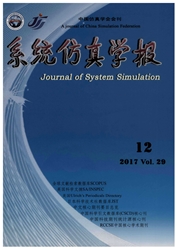

 中文摘要:
中文摘要:
为实现公交优先预信号感应控制策略,采用交通仿真软件VISSIM中逻辑控制语言VAP编写其程序,并结合软件进行仿真分析。从空间和时间两个方面对预信号设置进行了研究,提出具有"要"、"抢"、跳相功能的公交优先预信号感应控制的方法,并将基于此三种控制方法的VAP控制程序应用于北京市幸福大街交叉口的仿真实例中。结果表明:预信号绿灯提前启亮时间为4s、预信号红灯提前启亮时间为5s时公交优先预信号感应控制效果最优。公交优先预信号感应控制较无公交优先固定控制和公交优先预信号固定控制方式能大大降低主干道直行公交车和社会车辆延误,保证了交叉口主干道直行车流的顺利通行。
 英文摘要:
英文摘要:
In order to implement the transit priority based pre-signal actuated control(TSPbPAC) at signalized intersection,the program of TSPbPAC was formulated via VAP,which is a logic control language embedded in traffic simulation software VISSIM to analysis the results.The temporal and spatial measures of pre-signal setting were studied,then three approaches of TSPbPAC(that is phase requirements,phase steel and phase skipping) were put forward.These three TSPbPAC approaches were used in the simulation case of Xingfu Street intersection in Beijing.The results of simulation show that the performance of TSPbPAC is the best when the pre-signal green time starts ahead 4 seconds and the pre-signal red time starts ahead 5 seconds.TSPbPAC is better than transit priority based pre-signal fixed control and no-priority fixed control in reducing the delay of buses and no-priority vehicles of straight traffic flow on major leg.It guarantees the smoothness of the traffic flow on the major legs of signalized intersection.
 同期刊论文项目
同期刊论文项目
 同项目期刊论文
同项目期刊论文
 期刊信息
期刊信息
